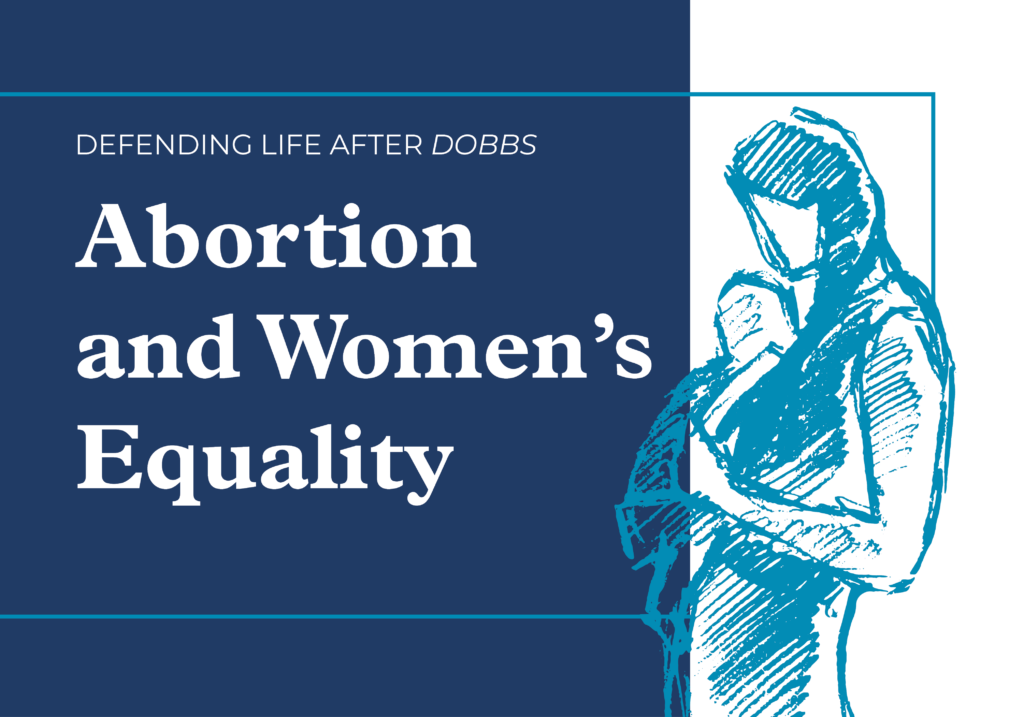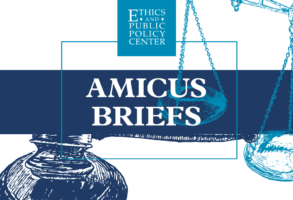
Published July 19, 2023
Is abortion necessary to achieve female equality? The Supreme Court embraced this notion in the 1992 case Planned Parenthood v. Casey, which upheld Roe v. Wade based in part on the claim that Americans had developed a “reliance interest” in the continued legality of abortion:
For two decades of economic and social developments, people have organized intimate relationships and made choices that define their views of themselves and their places in society, in reliance on the availability of abortion in the event that contraception should fail. The ability of women to participate equally in the economic and social life of the Nation has been facilitated by their ability to control their reproductive lives.1
But this text betrays one of the fundamental problems with leaning on abortion as necessary for female equality. Abortion enables society to avoid structuring “the economic and social life of the Nation” in a way that takes seriously the reality of female biology. There is a fundamental asymmetry in how men and women experience reproduction. In the simplest terms: women get pregnant and men do not. Readily available abortion offers only the illusion of equality, extending to women the chance to “participate equally” in society and the economy without requiring society to take female embodiment seriously. Abortion offers women the chance to participate on par with men, but only on men’s terms and by becoming more like them.
Abortion allows the employers to take the male body as the norm and view female fertility as a problem to be solved, rather than an important reality around which to structure social relations. This mindset encourages mothers to view their children as antagonists and allows men to view women as always sexually available without any requirement of marital commitment or promise of stability.
In recent decades, women have indeed made important strides toward greater equality. More women engage in professional work and elite women have greater employment flexibility; meanwhile, greater numbers of fathers engage in caring for their children. But none of these developments are due to the widespread availability of abortion.
There is little reason to believe that abortion has been a major reason that women have been able to achieve greater educational and career success. An analysis of labor, education, and poverty statistics reveals that even as abortion rates have steadily decreased since peaking shortly after Roe, women’s college-graduation rates and workforce participation have continued to increase.2 Between 1980 and 2017, the U.S. abortion rate decreased by more than 50 percent, but over that same period, women have made major advancements, even relative to men, according to several economic, professional, and academic metrics.3 For example, even as the abortion rate has dropped, women’s per capita earnings have increased, and the income gap between men and women has narrowed.4 Today, women earn a higher percentage of bachelor’s, master’s, and doctoral degrees than men.5 In fact, women have maintained a bigger share of these degrees for more than a decade and outnumber men in graduate programs 141 to 100.6
In short, women have achieved significant gains in social equality and opportunity, even as abortion has declined. Future progress in equality for women should take seriously the realities of female embodiment and the asymmetrical burdens that pregnant women bear. Using abortion to make women more like men does not advance the cause of women’s equality.
Endnotes:
- Planned Parenthood v. Casey, 505 U.S. 833, 856 (1992).
- Brief for 240 Women Scholars and Professionals et. al as Amicus Curiae Supporting Petitioners at 23a–33a, Dobbs v. Jackson Women’s Health Organization, No. 19-1392 (U.S. December 1, 2021).
- Melanie Israel, “A New Report Shows the U.S. Abortion Rate Is Declining. Here Are 4 Things You Need to Know,” Heritage Foundation, September 19, 2019 https://www.heritage.org/life/commentary/new-report-shows-the-us-abortion-rate-is-declining-here-are-4-things-you-need-know.
- “Women’s Earnings: The Pay Gap (Quick Take),” Catalyst, March 23, 2021. https://www.catalyst.org/research/womens-earnings-the-pay-gap/.
- Jessica Bryant, “Women Continue to Outnumber Men in College Completion,” BestColleges.com, November 19, 2021. https://www.bestcolleges.com/news/analysis/2021/11/19/women-complete-college-more-than-men/.
- See Mark J. Perry, “Women Earned Majority of Doctoral Degrees in 2019 for 11th Straight Year and Outnumber Men in Grad School 141 to 100,” American Enterprise Institute, October 15, 2020. https://www.aei.org/carpe-diem/women-earned-majority-of-doctoral-degrees-in-2019-for-11th-straight-year-and-outnumber-men-in-grad-school-141-to-100/.
Despite these positive developments suggesting a greater degree of social equality and opportunity for women, on the whole women don’t seem to be flourishing in our current regime of post-Roe permissive abortion laws. A landmark study on the “paradox of declining female happiness” found that, over a period of 35 years starting in the early 1970s, women’s subjective happiness and well-being has declined in both absolute and relative terms to men, a trend that holds consistent across industrialized countries. The study’s authors question whether modern social constructs have actually caused problems rather than solving all of the problems for women as was promised. See Betsey Stevenson and Justin Wolfers, “The Paradox of Declining Female Happiness,” American Economic Journal: Economic Policy, 1, no. 2 (2009): 27, https://www.nber.org/papers/w14969.











